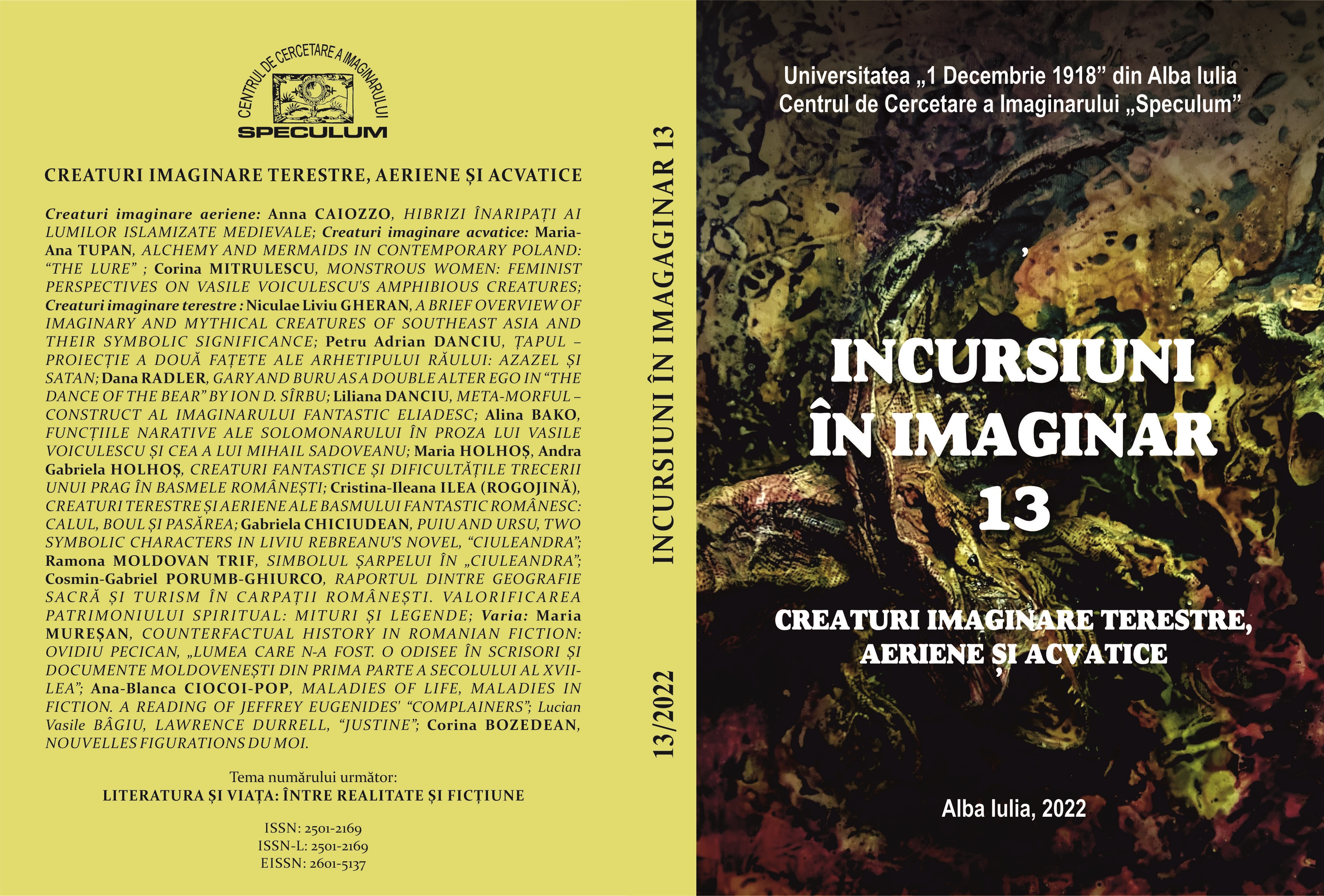A BRIEF OVERVIEW OF IMAGINARY AND MYTHICAL CREATURES OF SOUTHEAST ASIA AND THEIR SYMBOLIC SIGNIFICANCE
A BRIEF OVERVIEW OF IMAGINARY AND MYTHICAL CREATURES OF SOUTHEAST ASIA AND THEIR SYMBOLIC SIGNIFICANCE
Author(s): Niculae Liviu GheranSubject(s): Language and Literature Studies, Studies of Literature, Philology
Published by: Editura Aeternitas
Keywords: Southeast Asia; Imaginary; Myth; bestiary; Thailand; Vietnam; Myanmar; Cambodia;
Summary/Abstract: The bestiary of Southeast Asia is rich with a wide variety of imaginary mythical/non-mythical creatures, all complete with their specific symbolic associations (some common to all countries in the region, some specific only to a few of them). While an exhaustive discussion would certainly be enough to fill a book, what I aim within the following paper is a much shorter account of those I encountered and had the opportunity to research during my trips to the area between 2016-2020. Leographs, for example, are very common and include the Burmese Chinthe (a leograph is a stylized motif of an imaginary lion-like creature mainly found in Indospheric or Sinospheric regions). The Chinthe guards temples in Burma (Myanmar). Other leographs include the Thai and Chinese-inspired leographs, while the Singaporeans have the Merlion (a lion with a fish tail). Mythical demons guard Thai temples called ”Yaksha or yaks” (giant in the Thai language), while Cambodian and Laotian ones by the Naga. Vietnamese have a trinity of mythical creatures, including imaginary dragons, phoenixes, and tortoises, all possessing legendary attributes and functions that transcend the physical realm. Thai and Burmese mythical animals of Indian origin include Ganesha, the elephant god, one of the best-known and most worshipped deities in the Hindu pantheon. Airavata, another elephant-like creature, is believed to be guarding one of the points of the compass. In modern-day Burma, on the other hand, the zodiac is not monthly as is in the case of the western and sinospheric world. Days of the week are represented by real and imaginary animals that are given symbolic and mythical qualities and represent different cardinal directions. Garuda, the monster eagle, represents Sunday and Northeast, for example. The Buto Ijo are monsters who eat children for breakfast and are Indonesia's version of the orcs, while the Kinnari of Thailand seem to have the function angels play in Christian myth. These are some of the main ones I aim to discuss.
Journal: Incursiuni în imaginar
- Issue Year: 1/2022
- Issue No: 13
- Page Range: 63-96
- Page Count: 32
- Language: English

